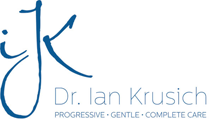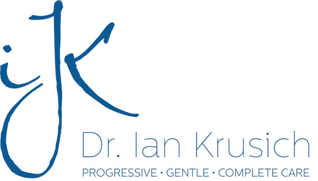What are Composite Bondings?
Composite bonding is a technique used to improve the cosmetic appearance of your teeth. It refers to a plastic or resin material that is bonded, or glued, to an existing tooth and then shaped by Dr. Krusich to create the desired look.
Unlike porcelain veneers or dental crowns, composite bonding removes little if any of the original tooth.
Bonding is ideal for fixing chipped, or cracked, teeth or reducing gaps between teeth, to create a more natural, visually appealing appearance. Whatever your specific goal, composite bonding quickly creates nicer looking teeth and renews confidence in your smile.
Advantages & Disadvantages of Composite Bondings
Advantages of Composite Bondings
- Composite bonding is a quick process, typically taking less than an hour in our Overland Park office.
- Composite bonding doesn’t reduce the tooth’s original structure.
- Composite bonding is less expensive than alternatives like veneers and crowns .
- Composite resins are available in different shades to better match your natural tooth color.
Disadvantages of Composite Bondings
- Composite bondings don’t last as long as more permanent solutions like veneers and crowns.
- Composite bondings can be stained by coffee, tea, or smoking.
What to Expect With Composite Bondings
Having a composite bondings procedure done, is a simple process performed in the dentist’s chair and usually does not require any anesthesia. The procedure is typically completed in a single, hour long appointment in our Overland Park and Leawood office. The steps are:
- Dr. Krusich begins by examining and cleaning the tooth to be bonded.
- A mild solution is applied to the tooth that facilitates the bonding of the composite resin to the tooth.
- The composite resin is applied in several coats, with each coat being hardened (or set) using a specially designed dentist’s light, to build the tooth up.
- Once an adequate amount of resin is on the tooth, the bond is sculpted by Dr. Krusich to the desired shape and texture to create your perfect smile.
Care of your Composite Bondings
Proper care of the bonded tooth ensures the longest possible duration of the bonding. The bonded teeth, just like the rest of your teeth, should be brushed and flossed daily. This is especially important if you drink coffee, tea, or smoke tobacco because they can stain composite bonds. Your teeth and bonds may stain at different rates leading to discoloration that makes the bond more noticeable. For best results, you should maintain your regular 6-month check-up and cleaning schedule with our hygienists.
Bonds typically won’t last as long as porcelain veneers or dental crowns and may need to be retouched or replaced every five to ten years.
Insurance and Composite Bondings
Composite bonding has become the standard care for chipped or cracked teeth and are typically covered by most insurance plans. Composite bondings performed for purely cosmetic reasons, may or may not be covered.
Dr. Krusich accepts most major dental insurance plans including Aetna, Cigna, and Delta Dental. However, plans may differ among employers and thus, your coverage maybe different even within the same insurance company. To minimize surprises, Dr. Krusich provides a complimentary pre-check of your insurance by our front desk team to determine your insurance coverage and deductibles before performing any bonding procedures.
Next Steps
If you are interested in learning more about composite bonding, or any other cosmetic dentistry procedures, please speak with your hygienist or call Krusich Dental at 913-383-2600 to schedule an appointment so we can determine the best solution for you.



